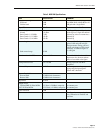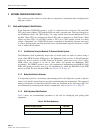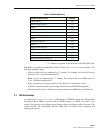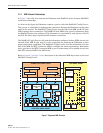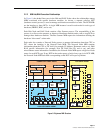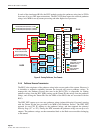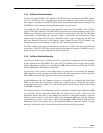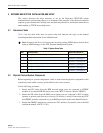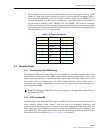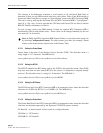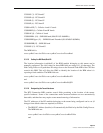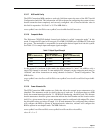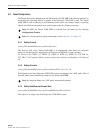
ADCP-75-192 • Issue 2 • June 2007
Page 21
© 2007, ADC Telecommunications, Inc.
2.4.5 Pathtrace Reverse Reception
In the reverse path, the SIF or FIC modules in the RANs that are connected to the RDC outputs,
as well as the SIFs or FICs in the Hub, pass-through the pathtrace strings from their inputs to
their outputs. In addition, the SIF/FIC HCPs report the passed-through pathtrace strings in the
SIF MIB for use by tenant processing and other higher-level processes.
In the Hub, the RSC module receives the pathtrace strings from several RDCs into its FPGA
from its DIF input connection. The RSC HCP reports the received input pathtrace strings in its
MIB for use by higher-level processes, as described in sections below. The RSC has the added
responsibility of determining the “majority inputs” to determine the most-prevalent input
pathtrace based on Tenant ID sub-strings. When the majority input is discovered, the RSC will
parse the Tenant ID from one of the majority inputs, append its own CPU IP Address, and
transmit the newly created pathtrace string to its two outputs (primary/diversity).
The HUC module receives the reverse pathtrace strings into its FPGA from up to two DIF input
connections. The HUC HCP then reports the received pathtrace strings in its MIB for use by
higher-level processes, as described in the following sections.
2.4.6 Pathtrace Detection/Reporting
On each node in the system, a Pathtrace Process is responsible for gathering up all the pathtrace
strings reported in the HCP MIBs on its own CPU. The Pathtrace Process then reports all the
discovered pathtrace strings in its own Pathtrace MIB, which indicates the HCP type, I2C/PCI
address, MIB index, and pathtrace string value.
On each node in the system, a Node Paths Process is responsible for examining the Pathtrace
MIB, identifying valid, complete, and stable Tenant IDs, and reporting the results in the Node
Paths MIB in a manner that simplifies tenant processing algorithms.
On the Hubmaster node, the Tenantscan process is responsible for examining the Node Paths
MIBs on all nodes and determining whether the contents contain Tenant IDs that match
configured tenants in the system. If so, then the Hostname and IP Address tables in the Tenant
OAM MIB are updated.
The Tenant processes in the Hubmaster node are responsible for updating the Equipment MIBs
on each node with the appropriate Tenant IDs and indices that are used on that node. The
Equipment Process then acts as the middle-level interface to the tenant hardware, reporting
status of all the hardware in the Status Table of the Equipment MIB and allowing hardware
configurations to occur via the Control Table of the Equipment MIB. Tenant processing in the
Hubmaster node is the primary user of the Equipment MIB for status and control of tenant
hardware. The details of this are described in more detail in the following section.



